Selecting the proper hardware, especially switches, ensures optimal performance. This article discusses SFP or Small Form Factor Pluggable switches, which are remarkably versatile and multifunctional. Small enterprises, large corporations, or data centers can all rely on SFP switches for ease and effectiveness. This guide explains SFP switches in detail, covering their functionality, advantages, and comparison with older networking models. Moreover, switches are critical in ensuring seamless and efficient digital infrastructure networking. After reading this article, we hope you realize why SFP switches are vital in modern networking.
What is an SFP Switch and How Does it Work?
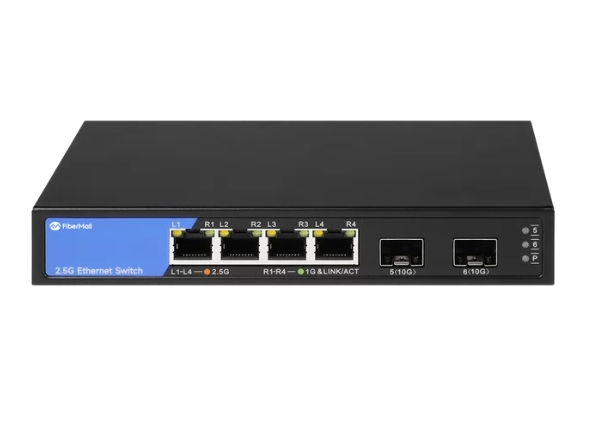
An SFP switch uses Small Form-Factor Pluggable (SFP) modules to form a network switch for high-speed connectivity between devices. These interchangeable modules support various media types, including copper or fiber-optic cables, providing flexible networking options based on specific requirements. The switch directs traffic between the devices so that data is transmitted efficiently throughout the network—especially in networks with SFP modules designed for higher speeds. SFP switches are particularly valued for their high modular scalability; users can add or change connections to the devices without replacing the entire device. This flexible configuration makes them ideal for large enterprises and smaller, more agile networks.
Key Features of an SFP Switch
- Scalability: SFP switches enable network growth by permitting easy modification or upgrade of connections without changing the hardware.
- Flexibility: They support multiple connection forms, such as copper and fiber optics, to meet various networking requirements.
- Speed: These switches support data transmission at high speeds, thus maximizing network performance.
- Reliability: Using internal backup and failover systems improves network uptime and stability.
- Compact Design: Their modular construction makes them space-efficient and allows for greater adaptability in various settings.
Understanding the Role of SFP Ports
SFP (Small Form-factor Pluggable) ports are used in network devices with modular transceivers. SFP ports enable the use of different transceivers, such as those designed for copper or fiber optic links. They offer adaptability and ease of dealing with changing network demands concerning distance and speed. SFP ports permit users to change transceivers, enhance the equipment’s value, increase scalability, and ensure compatibility with future needs and advanced networking technologies.
How SFP Switches Integrate with Ethernet Switches
SFP switches incorporate Ethernet switches through SFP ports that expand connectivity possibilities. These ports accept modular transceiver plugs, which permit fiber and copper Ethernet switches to interface with more diverse networks. Such integration enables Ethernet switches to optimally adapt to different distances and speeds as required by a network. Incorporating SFP modules provides more flexibility and scalability to Ethernet switches, thus enhancing their suitability for both small and large deployments.
How to Choose the Right Gigabit Ethernet Switch?
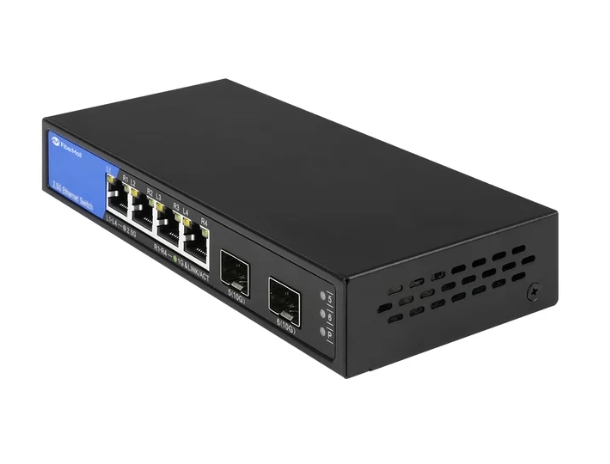
Comparing Managed and Unmanaged Switches
Control and functionality are the core differences between managed and unmanaged switches. A managed switch provides network monitoring, traffic management, and VLAN configuration, which enables the administrator to optimize the network performance at a granular level. Such switches are optimal for intricate networks that need intricate security and management customizations.
In contrast, unmanaged switches are basic SFP modules designed for high-speed applications without the previously mentioned complex features. They do not require configuration, making them ideal for essential accessibility functions like home and office settings where advanced networking control is irrelevant.
The two options differ based on the network’s sophistication, size, and requirements. Unmanaged switches are more straightforward and economical, while managed switches are tailored for dynamic networks.
The Importance of 10G Support
A 10G network is significant because of the fast-paced modern world, as we have growing demands for high-speed data transfer, low latency performance, and overall efficiency. Such networks guarantee rapid investment returns by improving business agility through enhanced data manipulation capabilities. It enables efficient support of high-bandwidth applications, mitigating the risk of overbought infrastructure, which is particularly vital for medium and large enterprise environments. Further, 10G networks help achieve unparalleled data center reliability by eliminating existing and creating new network bottlenecks and enhancing overall network reliability, making it a key feature for scalability and optimal performance in advanced networking solutions.
Factors Influencing Switch Performance
Multiple factors impact a switch’s performance.
- Port Speeds and Throughout: The speed at which each port operates and the switch’s data throughput capacity determine how well the switch can cope with network traffic.
- Latency: For low latency systems, data transmission is considerably faster and transfers data with minimal delay, essential for fast-paced applications.
- Switching Capacity: The available total bandwidth in a switch affects its processing capability for simultaneous traffic because of interference from other ongoing processes.
- Buffering and Memory: The backing and buffering offered are essential in controlling packet loss and crucial in heavy traffic.
- Network Design and Configuration: The designed network and other designated optimizations like VLAN pruning along encapsulated POS enhancement yield improved switch performance.
The factors mentioned above determine which switches will meet the requirements of a specific target network performance level.
Exploring SFP Transceiver Options
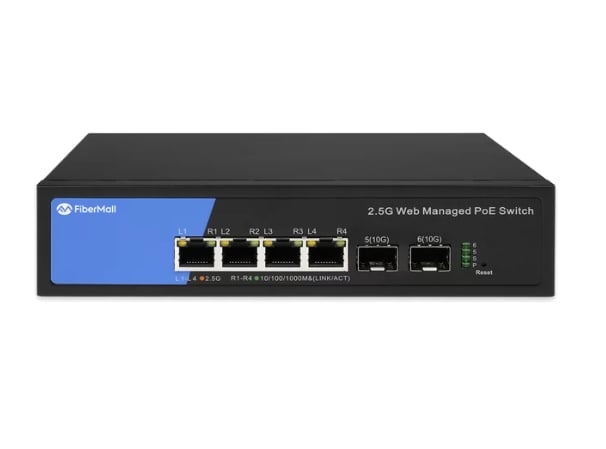
Types of SFP Modules Available
SFP (Small Form-Factor Pluggable) Modules are classified according to transmission capabilities and network needs.
- Copper SFP modules: Usually incorporate Ethernet interfaces and are intended mainly for short-range data transfer of a distance of under 1 km and usually operating at about 1 Gbps.
- Single-mode SFP Modules: Use single-mode fiber to enable long-distance high-performance communication, often surpassing 10 km.
- Multi-mode SFP Modules: These modules employ multi-mode fiber and are appropriate for short—or medium-range distances up to 500 meters. They are economical for many LAN applications.
- Bi-directional (BiDi) SFP Modules: Achieve high efficiency and space-saving in network configurations as they receive and transmit through one fiber strand.
- Wavelength division Multiplexing (WDM) SFP Modules: improves the utilization of dense networks by differentially transmitting several signals over a single fiber using distinct wavelengths, thereby minimizing the availability of the fiber.
All types serve particular requirements efficiently, allowing varied network topologies and infrastructure needs to be met.
Compatibility with Different Fiber Optic Cables
The SFP module can work with two types of fiber optic cables: single-mode and multimode. Single-mode cables are compatible with single-mode SFP modules and specialize in long-distance transmissions, usually over 10 kilometers. Multimode cables work with multimode SFP modules and are intended for shorter distances, such as data centers or campus network interconnections. The module type and application requirements determine the appropriate fiber optic cable type selection.
Installation and Maintenance of SFP Transceivers
To avoid electrical damage, switch the device off before installing SFP transceivers. Fine-tune the alignment to ensure the transceiver rests on the module’s port. Gently thrust the transceiver until it clicks into position. Lock the transceiver in place by activating any locking mechanism available. Connect a fiber optic cable to the transceiver, verifying that the correct polarity is maintained.
Occasionally, check SFP transceivers for dust, dirt, and damage. Clean the connector ports with a fiber optic cleaning tool, being careful not to tamper with the optical interfaces. Replace any worn and no longer functional transceivers. Routine network performance checks allow issues with the transceiver to be quickly and swiftly dealt with.
Benefits of Using a Managed SFP Switch
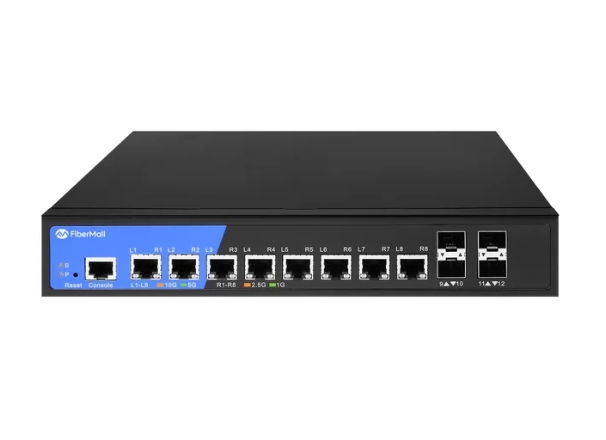
Advantages of VLAN Support
The support of VLANs has numerous benefits, one of which is increased network effectiveness, security, and control. The logical segmentation of a network into broadcast domains with VLANs also improves performance. The related segmentation minimizes unnecessary traffic on networks and decreases the chances of congestion, especially in large networks.
From a safety point of view, VLANs provide segmentation for sensitive data. Different divisions, such as finance and IT, can be assigned to their distinct VLANs while ensuring the traffic is kept to authorized users only. Such segmentation makes mitigating the risk of breaches or data leaks much more attainable.
VLANs also help simplify the management of complicated networks. Administrators can easily set up, monitor, and resolve network issues for logically configured grouped devices. For example, VLAN tagging (802.1Q standard) allows communication across switches without disrupting the logic that organizes traffic flows.
The newly developed managed SFP switches, which include QoS and protocol-based VLANs, allow even more effective use of VLANs. These features guarantee the utmost quality for vital communication services like video conferencing. All these advantages demonstrate why contemporary network architectures greatly value VLAN support.
How Managed Ethernet Enhances Network Security
Managed Ethernet switches enhance communications and counter security threats using sophisticated features tailored towards advancing security on the network itself. One such feature of paramount importance is port-based authentication via IEEE 802.1X. This standard guarantees access to the network only to authenticated devices. With the help of such mechanisms, networks require credentials or certificates to mitigate the malignant impact of obnoxious devices gaining access.
Another noteworthy feature is the support for Access Control Lists, or ACLs, which allow much more control over specific traffic flows. Administrators are empowered to set rules that allow or disallow traffic based on specified parameters like IP addresses, protocols, or port numbers, thereby building a virtual wall against the network that forewarns attack. ACLs, for example, can be used to prevent certain users from accessing servers or portions of data deemed sensitive, which vastly reduces the chances of an attack by ill-willed individuals.
Traffic monitoring is often appended with anomaly detection and management enabled on the Managed Ethernet. These technologies have made real-time evaluation of network activity possible, ensuring that irregular activities like DDoS attacks or unauthorized data transfer can be easily detected. Other, more modern switches can integrate strong encryption codes that secure communication by protecting it from tampering on both sides of the endpoints, enabling MACsec 802.1AE.
Industry reports suggest that proactive implementation of these advanced security features can mitigate the likelihood of a cyber breach by more than 40%. This underscores the importance of these features in combating modern security challenges. Managed Ethernet switches foster profound, multi-dimensional security and assist enterprises in safeguarding and fortifying their network infrastructure, ensuring uninterrupted and secure access.
Optimizing Network Performance with Managed Switches
Managed switches support the optimization of network performance by providing control over traffic and bandwidth distribution. With QoS features, information streams are reliable and consistent, ensuring that critical data, like voice and video, is not neglected. Also, managed switches allow the configuration of virtual local area networks (VLANs) that separate network traffic, lowering congestion for greater effectiveness and efficiency. These switches come with advanced monitoring capabilities to provide insights in real-time, which aid in the swift identification and resolution of bottlenecks. Including all these features, Managed switches can improve the stability and scalability of network environments.
Installation Tips for a 24-Port Fiber Switch
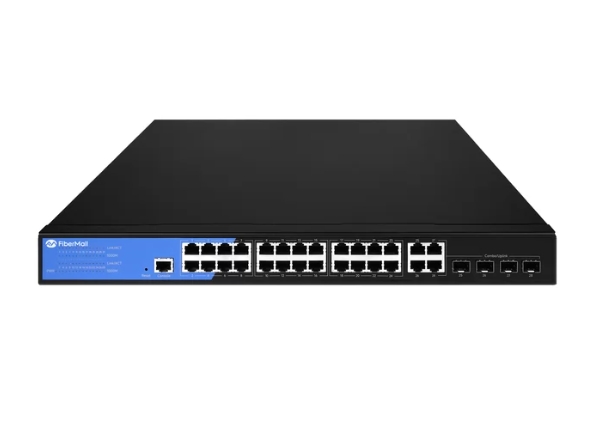
Step-by-Step Guide to Setting Up SFP Slots
- Check Compatibility: Ensure the compatibility of the Small Form-factor Pluggable (SFP) transceivers and the 24-port fiber switch by obtaining proof of compatibility. Pay attention to transceivers that can operate at the required speed and wavelength.
- Power Off the Switch: To remove the SFP modules, the switch must be off-powered to avoid damage.
- Insert the SFP Module: Gently push the SFP transceiver into its designated slot and ensure it is fully pushed until it clicks. One must ensure that it is fully set.
- Connect Fiber Cables: Attach the correct port corresponding to the fiber optic cables to the SFP transceiver. Ensure the ports match and all proper connections are made to the RX and TX ports.
- Power On and Test: Confirm the switch is turned on and check any sign displaying the SFP module receiving power. From there, the linked stability is tested using diagnostic tools.
- Monitor Operation: Monitor the switch’s management interface for optimal configuration and performance to alter deficiencies.
This describes the best way to ensure compatibility for the initial setup while preserving overall network functionality and integrity.
Common Mistakes to Avoid When Deploying Network Switches
- Incorrect Cable Management: Failure to properly manage and organize cables and wires can result in poor signals, make troubleshooting more complex, and increase the chances of cable damage. Always enroll and organize cables in a tidy manner.
- Overlooking Compatibility: Using hardware or software that does not correspond with the switch may reduce performance and cause device failure. Check that each component complies with the manufacturer’s guidelines.
- Ignoring Firmware Updates: An outdated firmware version relative to the current one makes the switch susceptible to threats and operational inefficiencies. Before configuring the switch, confirm its firmware is current over the most recent version.
- Improper Cooling And Placement: Mounting switches in conditions that do not provide adequate airflow would significantly risk overheating, reducing performance, and damaging hardware components. Switches should be placed in well-ventilated racks or enclosures.
- Skipping Network Configuration: Setting up switches without modifying VLANs, security, and QoS parameters significantly increases the chances of bottlenecking network congestion, which can create vulnerabilities in the network’s security posture. These adjustments should be made before setting up switches on the network.
- Failing to Test Connections: Launching a new network without responsibly ensuring the basic data flow and link function creates a long list of unmanaged problems. Assess each connection in detail to check their stability and reliability, guaranteeing problem-free network operation.
Troubleshooting Connection Issues in a Gigabit Switch
In remedying connection problems regarding a Gigabit switch, consider following these guidelines:
- Check Physical Connections: Inspect each cable and connection for proper seating and port compliance, looking for any cuts or loose endpoints.
- Examine Ports with LED Signaling: Check if any port LEDs are on or off to indicate if the port is believed to be idle, indicating error links, or disengaged effective links.
- Validate VLAN Configuration: Ensure active devices are appropriately allocated to VLANs and confirm that intravlan routing works if required.
- Conduct Network Traffic Diagnostics: Utilize network monitoring devices to trace redundant data traffic, data storms, or heavy load on specific ports.
- Examine Firmware and Configuration: Confirm the switch is operating on the most recent firmware version and examine QoS, security, and other settings for possible conflicts.
- Deductive Isolation: Shut down devices or redirect traffic streams to the fault point and identify the malfunction.
Considering that most issues that can stem from a switch are related to the port or cable connections, these guidelines systematically clean up common gaps every network user faces.
Frequently Asked Questions (FAQs)
Q: What is an SFP Switch, and how do they differ from other Ethernet switches?
A: An SFP switch accepts Small Form-Factor Pluggable (SFP) modules, enabling fiber optic and Ethernet connections and offering better flexibility and scalability than traditional wired Ethernet ports. Differences that separate carrier Ethernet from conventional wired networks include enhanced speed, more excellent range, and the ability to use multimode and single-mode fibers.
Q: How do I decide between SFP ports and RJ45 ports on a switch?
A: The choice between RJ45 and SFP ports will depend on specific network needs. SFP ports connect to fiber optic cables and are meant for long-distance, high-speed connections, while RJ45 ports are used for Ethernet connections with copper cables. SFP ports work best if your networking needs require uplink circuits or extended distances.
Q: Why is installing a PoE switch in a network system advantageous?
A: Installing a PoE switch improves a network’s efficiency. IP cameras, wireless access points, and VoIP phones can now be installed using a single RJ45 Ethernet cable, eliminating the need for a separate power supply. Reduced cabling requirements also lessen construction expenses, which is particularly helpful in a 24-port switch configuration.
Q: What criteria should I consider when comparing eight and larger port switches like a 24-port switch?
A: When deciding whether to purchase an 8-port switch or a 24-port switch, analyze the size of your network, potential growth, and whether you need SFP module ports that enable high-speed connections. An 8-port switch best serves smaller networks and those with a limited number of devices. Meanwhile, larger networks have the option of a 24-port switch, which offers enhanced capacity and future expansion readiness. Flexibility is also provided, with numerous SFP options available for both configurations.
Q: How does a 10-gigabit switch impact modern networks?
A: The switch augments the network throughput significantly while enhancing network efficiency. Therefore, it is ideal for data-intensive applications and network aggregation. It supports higher bandwidth and data traffic and thus serves as a solution for enterprise-grade networks or data centers.
Q: How do PoE IEEE standards affect switch selection?
A: Standards like PoE IEEE802.3af, 802.3at, and 802.3bt outline the power delivery constraints for a PoE switch. Understanding these rules is vital for choosing a switch that meets the power requirements per port of the devices for optimum performance.
Q: Why is Netgear for SFP switches so popular?
A: Netgear is widely known as a good brand for SFP switches because it offers reliable performance, simplicity of use, and a variety of models catering to various networking needs. It is also known for having many options, such as 10G SFP ports and RJ45 ports, along with PoE, making it flexible for small and big businesses.
Q: Can SFP modules be utilized with manganese or singularly mode SFP fiber connections?
A: SFP modules are compatible with multimode and singularly mode SFP fiber connections. It is crucial to select the appropriate SFP module for the fiber optic cable used and the distance needed for the network link.
Q: Why are combo SFP ports considered essential for a switch?
A: Combo SFP ports allow using either an RJ45 or an SFP module in the same port, which adds flexibility to the network design. This enables network managers to select copper or fiber connections according to the requirements and even for consideration of changes down the road.
Reference Sources
1. SFP: Provisioning Service Function Chains on Programmable Switches for Cloud Tenants
- Authors: Hongyi Huang, Wenfei Wu, Yongchao He, Zehua Guo
- Publication Date: May 1, 2022
- Journal: IEEE International Parallel and Distributed Processing Symposium
- Citation Token: (Huang et al., 2022, pp. 1239–1249)
- Summary:
- The SDSU researchers propose SFP, a framework for programmable switch-based service function chain (SFC) provision within the cloud environment.
- The authors describe programmable switches’ strategic, flexible deployment and high-performance features.
- Key Findings:
- SFP quickly provides higher resource utilization due to offloading heavy NFV computation from servers to switches.
- Function placement optimization for physical and logical NFs occurs within a “relaxed” integer programming model control plane over the active_link throughput to tenant traffic.
- Methodology:
- The authors claim that the evaluations done using their prototype validate that SFP meets the claimed SFP objectives concerning switch resource utilization and execution time.
2. Advanced Dynamic Control of Backhaul and Service port traffic with SDN Scheduling
- Authors: Minqi Wang, G. Simon, L. Neto, Isabel Amigo, L. Nuaymi, P. Chanclou
- Publication Date: December 1, 2020
- Journal: European Conference on Optical Communications
- Citation Token: (Wang et al., 2020, pp. 1-4)
- Summary:
- This work describes an approach for Operating Level Terminals (OLTs) that integrates Smart SFPs with SDN Controllers for dynamic traffic management.
- Key Findings:
- The system under consideration is custom-developed for both backhaul and service ports, which optimizes traffic management and reduces energy consumption.
- Methodology:
- The authors provided a case study to validate their solution, showing positive outcomes for dynamic traffic management.
3. Pre-Provisioning Protection for Enhanced Recovery Speed in Service Function Chaining
- Authors: P. Thorat, Niraj Kumar Dubey
- Publication Date: July 1, 2020
- Journal: IEEE International Conference on Electronics, Computing and Communication Technologies
- Citation Token: (Thorat & Dubey, 2020, pp. 1–6)
- Summary:
- This paper proposes a segment-based SFP protection method that improves failure recovery in service function chaining through flow aggregation along shared service segments.
- Key Findings:
- The method proposed optimizes the detour routing for individual flows, thus decreasing the control memory load in the switches.
- Methodology:
- The authors developed a local detour method using a flow-grouping technique and tested its effectiveness on simulation models designed for rapid recovery.
Related Products:
-
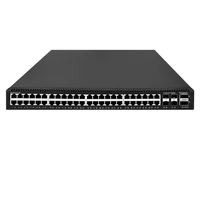 S3100-48T2Q4X, 48-Port Ethernet Switch, 48x 10/100/1000/2500/10G BASE-T RJ45, with 2x 40G SFP+ and 4x 1G/10G SFP+ Uplinks
$1095.00
S3100-48T2Q4X, 48-Port Ethernet Switch, 48x 10/100/1000/2500/10G BASE-T RJ45, with 2x 40G SFP+ and 4x 1G/10G SFP+ Uplinks
$1095.00
-
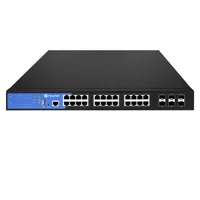 S3100-24T6X-P, 24-Port Ethernet Switch L3, PoE+ Switch, 24x 10/100/1000/2500 BASE-T RJ45, with 6x 1G/10G SFP+ Uplinks
$746.00
S3100-24T6X-P, 24-Port Ethernet Switch L3, PoE+ Switch, 24x 10/100/1000/2500 BASE-T RJ45, with 6x 1G/10G SFP+ Uplinks
$746.00
-
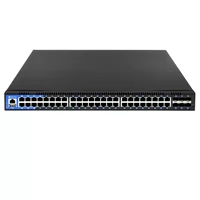 S3100-48T6X-P, 48-Port Ethernet Switch L3, PoE+ Switch, 48x 10/100/1000BASE-T RJ45, with 6x 1G/10G SFP+ Uplinks
$734.00
S3100-48T6X-P, 48-Port Ethernet Switch L3, PoE+ Switch, 48x 10/100/1000BASE-T RJ45, with 6x 1G/10G SFP+ Uplinks
$734.00
-
 S3100-8T4X, 8-Port Ethernet Switch L3, 8x 10/100/1000/2500/10G BASE-T RJ45 Ports, with 4x 1G/10G SFP+ Uplinks
$398.00
S3100-8T4X, 8-Port Ethernet Switch L3, 8x 10/100/1000/2500/10G BASE-T RJ45 Ports, with 4x 1G/10G SFP+ Uplinks
$398.00
-
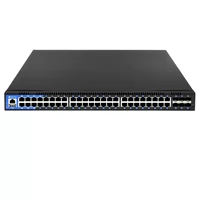 S3100-48T6X, 48-Port Ethernet Switch L3, 48x 10/100/1000BASE-T RJ45, with 6x 1G/10G SFP+ Uplinks
$365.00
S3100-48T6X, 48-Port Ethernet Switch L3, 48x 10/100/1000BASE-T RJ45, with 6x 1G/10G SFP+ Uplinks
$365.00
-
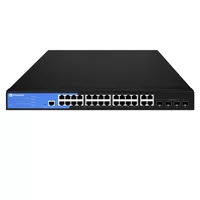 S2100-24T4TS-P, 24-Port Ethernet Switch L2+, PoE+ Switch, 24x 10/100/1000BASE-T RJ45, with 4x 1G RJ45/SFP Combo Uplinks
$360.00
S2100-24T4TS-P, 24-Port Ethernet Switch L2+, PoE+ Switch, 24x 10/100/1000BASE-T RJ45, with 4x 1G RJ45/SFP Combo Uplinks
$360.00
-
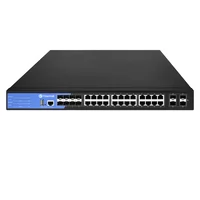 S3100-16T8TS4X, 16-Port Ethernet Switch L3, 16x 10/100/1000BASE-T RJ45, with 8 x 1Gb RJ45/SFP Combo and 4 x 1Gb SFP Uplinks
$340.00
S3100-16T8TS4X, 16-Port Ethernet Switch L3, 16x 10/100/1000BASE-T RJ45, with 8 x 1Gb RJ45/SFP Combo and 4 x 1Gb SFP Uplinks
$340.00
-
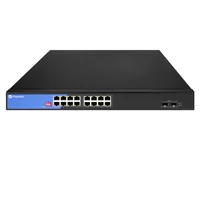 S2100-16T2S-P, 16-Port Ethernet Switch L2+, PoE+ Switch, 16x 10/100/1000BASE-T RJ45, with 2x 1G SFP Uplinks
$230.00
S2100-16T2S-P, 16-Port Ethernet Switch L2+, PoE+ Switch, 16x 10/100/1000BASE-T RJ45, with 2x 1G SFP Uplinks
$230.00
-
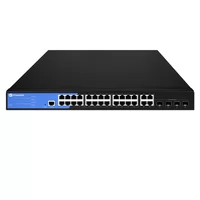 S2100-24T4TS, 24-Port Ethernet Switch L2+, 24x 10/100/1000BASE-T RJ45, with 4x 1G RJ45/SFP Combo Uplinks
$148.00
S2100-24T4TS, 24-Port Ethernet Switch L2+, 24x 10/100/1000BASE-T RJ45, with 4x 1G RJ45/SFP Combo Uplinks
$148.00
-
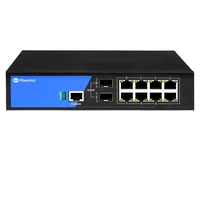 S2100-8T2S-P, 8-Port Ethernet Switch L2+, PoE+ Switch, 8x 10/100/1000BASE-T RJ45, with 2x 1G SFP Uplinks
$139.00
S2100-8T2S-P, 8-Port Ethernet Switch L2+, PoE+ Switch, 8x 10/100/1000BASE-T RJ45, with 2x 1G SFP Uplinks
$139.00
-
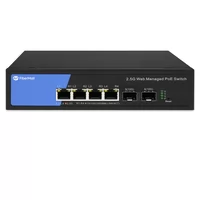 S3100-4T2X-P, 4-Port Gigabit Ethernet Managed Switch, PoE+ Switch, 4x 10/100/1000/2500 BASE-T RJ45, with 2x 1G/10G SFP+ Uplinks
$90.00
S3100-4T2X-P, 4-Port Gigabit Ethernet Managed Switch, PoE+ Switch, 4x 10/100/1000/2500 BASE-T RJ45, with 2x 1G/10G SFP+ Uplinks
$90.00
-
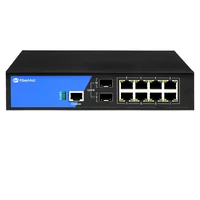 S2100-8T2S, 8-Port Ethernet Switch L2+, 8x 10/100/1000BASE-T RJ45, with 2x 1G SFP Uplinks
$71.00
S2100-8T2S, 8-Port Ethernet Switch L2+, 8x 10/100/1000BASE-T RJ45, with 2x 1G SFP Uplinks
$71.00
Related posts:
- Cisco 8000 Router Product Introduction and Competitive Analysis
- The Impact of High-Speed 400G and 800G Optical Module Packaging on Bandwidth
- Everything You Need to Know About a 10G Fiber Optic Network Card for High-Speed Ethernet Connections
- Unveiling the 25G Tunable DWDM SFP28: The Future of Optical Transceiver Technology
